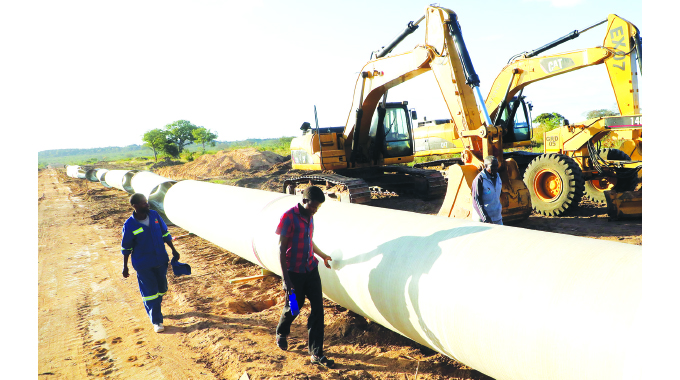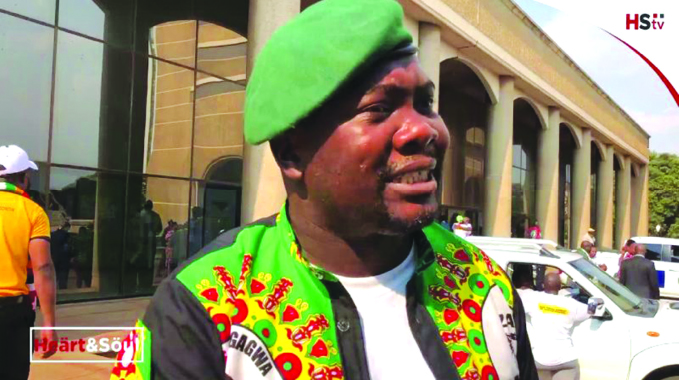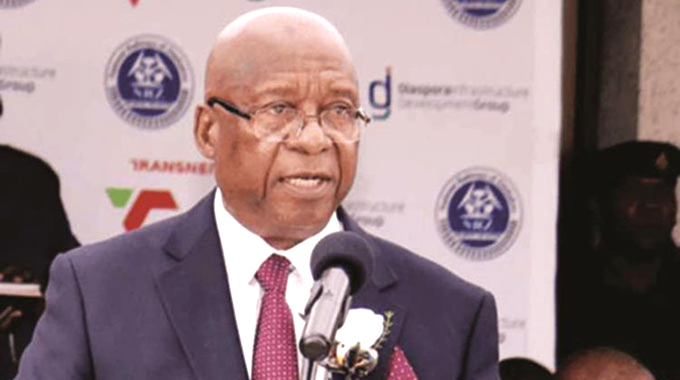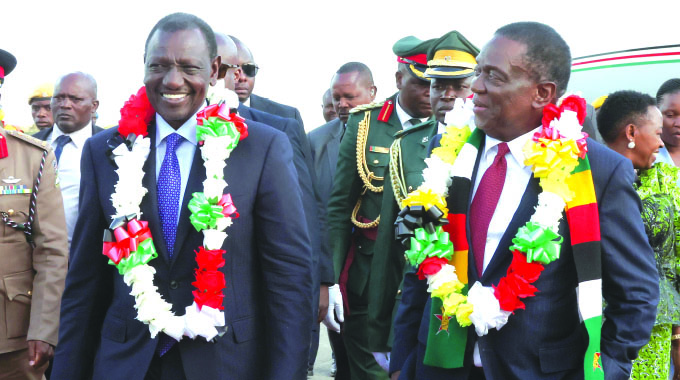Lake Gwayi-Shangani completion set for June

Bulawayo Bureau
Material for the pipeline to bring water from Lake Gwayi-Shangani to Bulawayo City has arrived in the country and has since been placed at strategic points for connection ahead of the end of the dam’s construction expected next month.
Our Bulawayo Bureau yesterday visited Cowdray Park where some of the pipes have been placed ready for the laying of the pipeline bringing water from the dam to the city. The pipes and related material arrived last week.
The laying of the 245km pipeline is expected to be completed by October as 11 contracted companies are already on the ground.
The Zimbabwe National Water Authority (Zinwa) two months ago signed a US$50 million contract with Flowtite South Africa to supply the glass fibre reinforced pipes needed for the pipeline.
The delivery of the pipes started last Thursday with 80 more trucks expected to bring the remaining pipes from South Africa.
Construction of the Lake Gwayi-Shangani and laying of the pipeline is expected to end Bulawayo’s perennial water woes.
The project is also expected to result in a greenbelt that will result in the Matabeleland region being food sufficient as irrigation schemes would be established in various strategic points along the pipeline route.
Already, Government has identified a vast tract of irrigable land covering 10 000 hectares along the Gwayi-Shangani-Bulawayo pipeline.
The Lake Gwayi-Shangani construction is part of the National Matabeleland Zambezi Water Project, an idea conceived in 1912 but failed to materialise, only for President Mnangagwa’s Government to make it a reality.
In an interview, Lands, Agriculture, Water, Fisheries and Rural Development Minister Dr Anxious Masuka, said the Lake Gwayi-Shangani wall was 68 percent complete and was expected to meet the June deadline.
Last Thursday, Dr Masuka conducted an assessment tour of Lake Gwayi-Shangani construction as well the pipeline route up to Luveve and expressed confidence that deadlines would be met.
“Why we went to Gwayi-Shangani, it is part of the monthly visit that we do to ensure that the President’s target that the Lake is completed by June 30 is done,” said Dr Masuka.
“What we saw is that when the President visited on March 18, the progress was at 60 percent and as of yesterday, we were at 68 percent, which is impressive.
“We are now able to lay double the amount of concrete we used to do so we are on course to ensuring that the Lake Gwayi-Shangani is complete by June 30 substantially so.”
Dr Masuka said while construction at the lake was expected to be completed mid-year this year, the laying of the pipeline should be completed five months later.
“We also had an opportunity (to assess the laying works on the pipeline), we have given 11 companies contracts to ensure that the pipeline is completed by October 31.
“We moved the whole way from Gwayi Shangani to Luveve-Cowdray Park and we saw that all the companies were there, excavating.
“We also wanted to ascertain the pipes and rate at which they are coming will be commensurate with the pace which we want to complete this project by October 31 and indeed, we received the first truck of pipes.
“There will be 80 trucks coming in everyday to make sure that we are on course. Indeed, Bulawayo, the nation and everyone else should expect that before Christmas, we will commission the project,” he said.
Dr Masuka said the project will be transformative to the Matabeleland region and already, locals were being employed in the project.
“We have 500 employed on the dam itself; the companies are yet to evaluate the numbers that will be employed in the five districts that the pipeline will pass through.
“But this will have a very substantial impact and this is rural development and this is the essence of Vision 2030,” said Dr Masuka.
Bulawayo Provincial Affairs and Devolution Permanent Secretary Mr Paul Nyoni said addressing water problems in Bulawayo would boost investor confidence.
“One of the functions of the project is to address water problems in Bulawayo. The pipeline is the conduit for that water to get to Bulawayo and this is one thing we are waiting for,” said Mr Nyoni.
“You are unlikely to see an investment when there are issues to do with water and energy. If we address the water situation, we are assuring the investors of that resource that is critical.
“You may know that we are very large in agro-processing and that is a water intensive process. Companies such as Arenel had to drill boreholes and place JoJo tanks and it’s the same as United Refineries, the media has reported that once in a while they had to bring bowsers. So, if current investors are struggling you are unlikely to attract new investors and investing investors may not likely to expand their plants.”








Comments